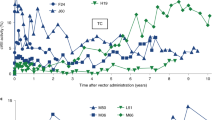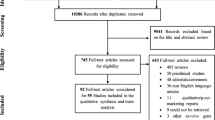Abstract
Integration site analysis was performed on six dogs with canine leukocyte adhesion deficiency (CLAD) that survived greater than 1 year after infusion of autologous CD34+ bone marrow cells transduced with a gammaretroviral vector expressing canine CD18. A total of 387 retroviral insertion sites (RIS) were identified in the peripheral blood leukocytes from the six dogs at 1 year postinfusion. A total of 129 RIS were identified in CD3+ T-lymphocytes and 102 RIS in neutrophils from two dogs at 3 years postinfusion. RIS occurred preferentially within 30 kb of transcription start sites, including 40 near oncogenes and 52 near genes active in hematopoietic stem cells. Integrations clustered around common insertion sites more frequently than random. Despite potential genotoxicity from RIS, to date there has been no progression to oligoclonal hematopoiesis and no evidence that vector integration sites influenced cell survival or proliferation. Continued follow-up in disease-specific animal models such as CLAD will be required to provide an accurate estimate of the genotoxicity using gammaretroviral vectors for hematopoietic stem cell gene therapy.
This is a preview of subscription content, access via your institution
Access options
Subscribe to this journal
Receive 12 print issues and online access
$259.00 per year
only $21.58 per issue
Buy this article
- Purchase on Springer Link
- Instant access to full article PDF
Prices may be subject to local taxes which are calculated during checkout



Similar content being viewed by others
References
Deichmann A, Hacein-Bey-Abina S, Schmidt M, Garrigue A, Brugman MH, Hu J et al. Vector integration is nonrandom and clustered and influences the fate of lymphopoiesis in SCID-X1 gene therapy. J Clin Invest 2007; 117: 2225–2232.
Hacein-Bey-Abina S, Von Kalle C, Schmidt M, McCormack MP, Wulffraat N, Leboulch P et al. LMO2-associated clonal T cell proliferation in two patients after gene therapy for SCID-X1. Science 2003; 302: 415–419.
Ott MG, Schmidt M, Schwarzwaelder K, Stein S, Siler U, Koehl U et al. Correction of X-linked chronic granulomatous disease by gene therapy, augmented by insertional activation of MDS1-EVI1, PRDM16 or SETBP1. Nat Med 2006; 12: 401–409.
Aiuti A, Slavin S, Aker M, Ficara F, Deola S, Mortellaro A et al. Correction of ADA-SCID by stem cell gene therapy combined with nonmyeloablative conditioning. Science 2002; 296: 2410–2413.
Gaspar HB, Bjorkegren E, Parsley K, Gilmour KC, King D, Sinclair J et al. Successful reconstitution of immunity in ADA-SCID by stem cell gene therapy following cessation of PEG-ADA and use of mild preconditioning. Mol Ther 2006; 14: 505–513.
Hacein-Bey-Abina S, Le Deist F, Carlier F, Bouneaud C, Hue C, De Villartay JP et al. Sustained correction of X-linked severe combined immunodeficiency by ex vivo gene therapy. N Engl J Med 2002; 346: 1185–1193.
Schwarzwaelder K, Howe SJ, Schmidt M, Brugman MH, Deichmann A, Glimm H et al. Gammaretrovirus-mediated correction of SCID-X1 is associated with skewed vector integration site distribution in vivo. J Clin Invest 2007; 117: 2241–2249.
Li Z, Dullmann J, Schiedlmeier B, Schmidt M, von Kalle C, Meyer J et al. Murine leukemia induced by retroviral gene marking. Science 2002; 296: 497.
Seggewiss R, Pittaluga S, Adler RL, Guenaga FJ, Ferguson C, Pilz IH et al. Acute myeloid leukemia is associated with retroviral gene transfer to hematopoietic progenitor cells in a rhesus macaque. Blood 2006; 107: 3865–3867.
Beard BC, Keyser KA, Trobridge GD, Peterson LJ, Miller DG, Jacobs M et al. Unique integration profiles in a canine model of long-term repopulating cells transduced with gammaretrovirus, lentivirus, or foamy virus. Hum Gene Ther 2007; 18: 423–434.
Bauer Jr TR, Hai M, Tuschong LM, Burkholder TH, Gu Y-C, Sokolic RA et al. Correction of the disease phenotype in canine leukocyte adhesion deficiency using ex-vivo hematopoietic stem cell gene therapy. Blood 2006; 108: 1767–1769.
Suzuki T, Shen H, Akagi K, Morse HC, Malley JD, Naiman DQ et al. New genes involved in cancer identified by retroviral tagging. Nat Genet 2002; 32: 166–174.
Wu X, Li Y, Crise B, Burgess SM . Transcription start regions in the human genome are favored targets for MLV integration. Science 2003; 300: 1749–1751.
Ivanova NB, Dimos JT, Schaniel C, Hackney JA, Moore KA, Lemischka IR . A stem cell molecular signature. Science 2002; 298: 601–604.
Shepherd BE, Guttorp P, Lansdorp PM, Abkowitz JL . Estimating human hematopoietic stem cell kinetics using granulocyte telomere lengths. Exp Hematol 2004; 32: 1040–1050.
Acknowledgements
We thank Dr William Telford and Veena Kapoor for assistance with flow cytometry. This research was supported by the Intramural Research Program of the NIH, National Cancer Institute, Center for Cancer Research. Presented in part in abstract form at the 47th and 48th annual meetings of the American Society of Hematology, Atlanta, GA, December 12, 2005 and Orlando, FL, December 9, 2006, and at the 9th and 10th annual meetings of the American Society of Gene Therapy, Baltimore, MD, May 31, 2006 and Seattle, WA, May 30, 2007.
Author information
Authors and Affiliations
Corresponding author
Additional information
Supplementary Information accompanies the paper on Gene Therapy website (http://www.nature.com/gt)
Rights and permissions
About this article
Cite this article
Hai, M., Adler, R., Bauer, T. et al. Potential genotoxicity from integration sites in CLAD dogs treated successfully with gammaretroviral vector-mediated gene therapy. Gene Ther 15, 1067–1071 (2008). https://doi.org/10.1038/gt.2008.52
Received:
Revised:
Accepted:
Published:
Issue Date:
DOI: https://doi.org/10.1038/gt.2008.52
Keywords
This article is cited by
-
A comparison of foamy and lentiviral vector genotoxicity in SCID-repopulating cells shows foamy vectors are less prone to clonal dominance
Molecular Therapy - Methods & Clinical Development (2016)
-
Long-Term Follow-up of Foamy Viral Vector-Mediated Gene Therapy for Canine Leukocyte Adhesion Deficiency
Molecular Therapy (2013)
-
Gene Therapy of Canine Leukocyte Adhesion Deficiency Using Lentiviral Vectors With Human CD11b and CD18 Promoters Driving Canine CD18 Expression
Molecular Therapy (2011)



